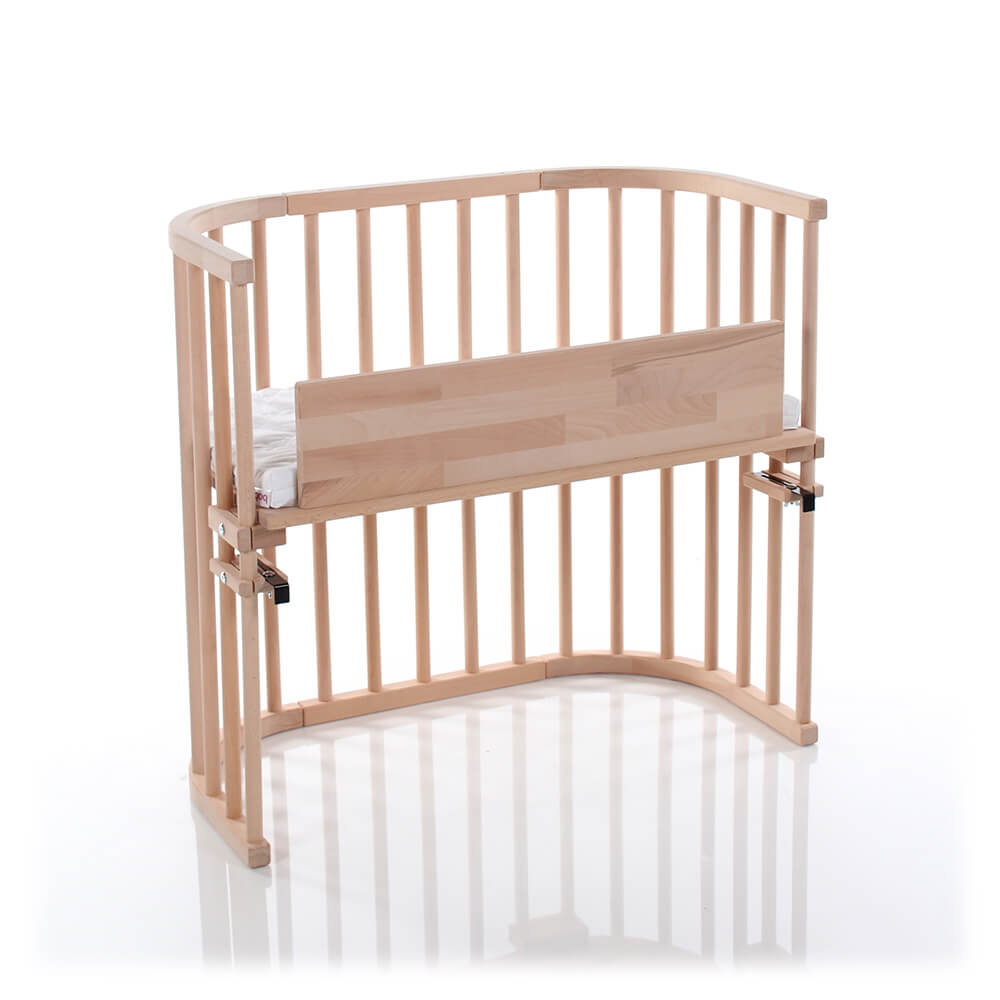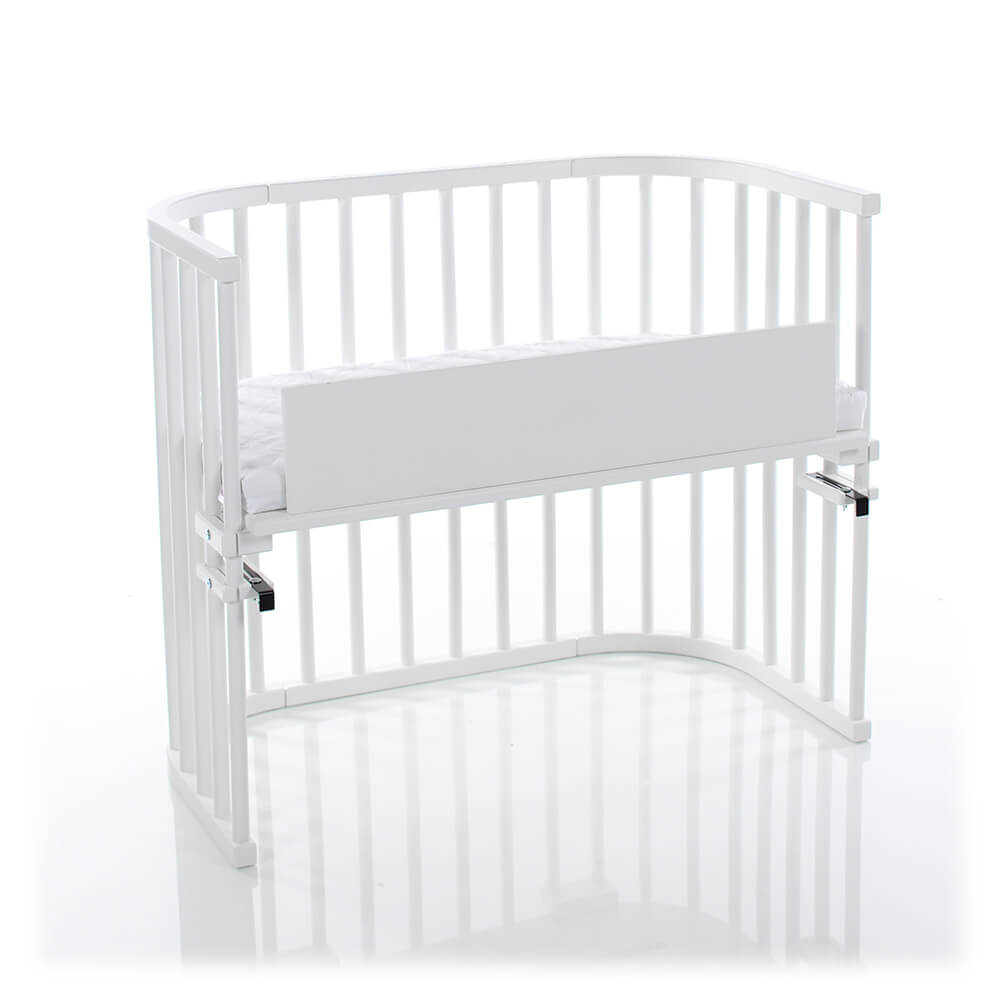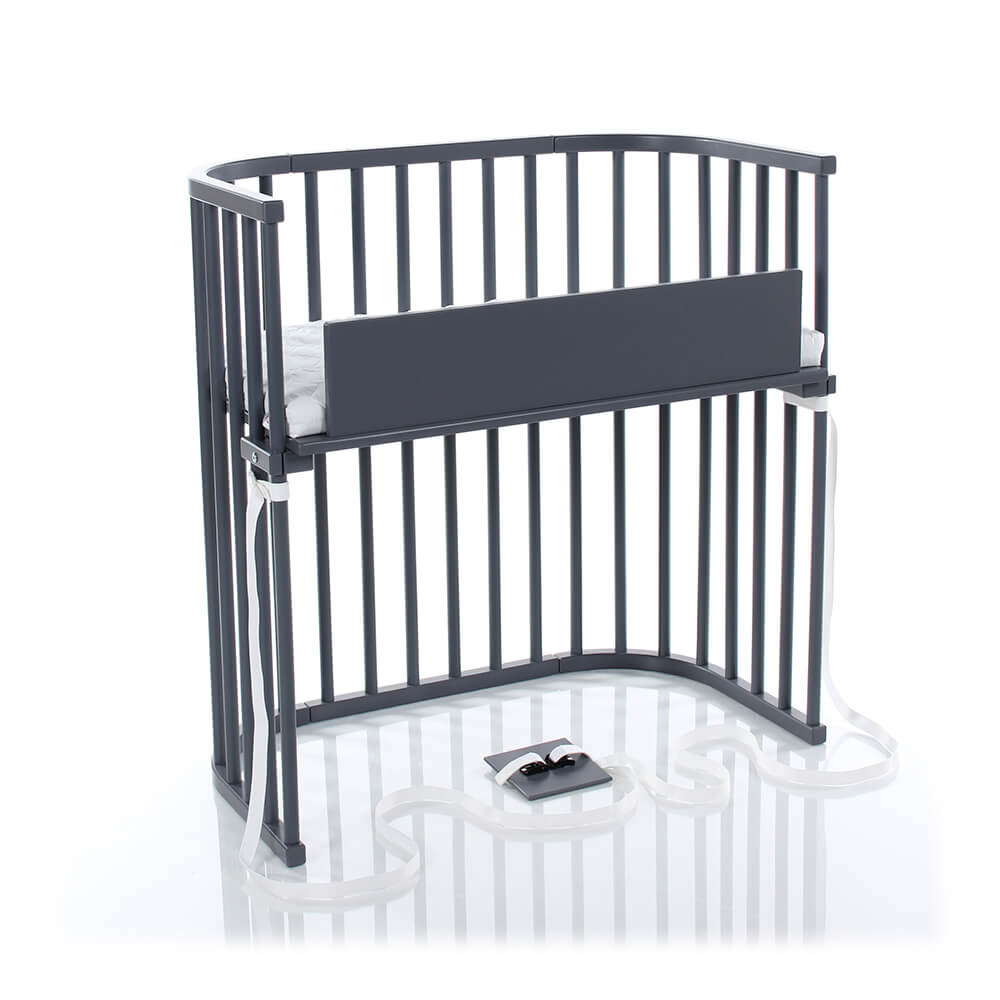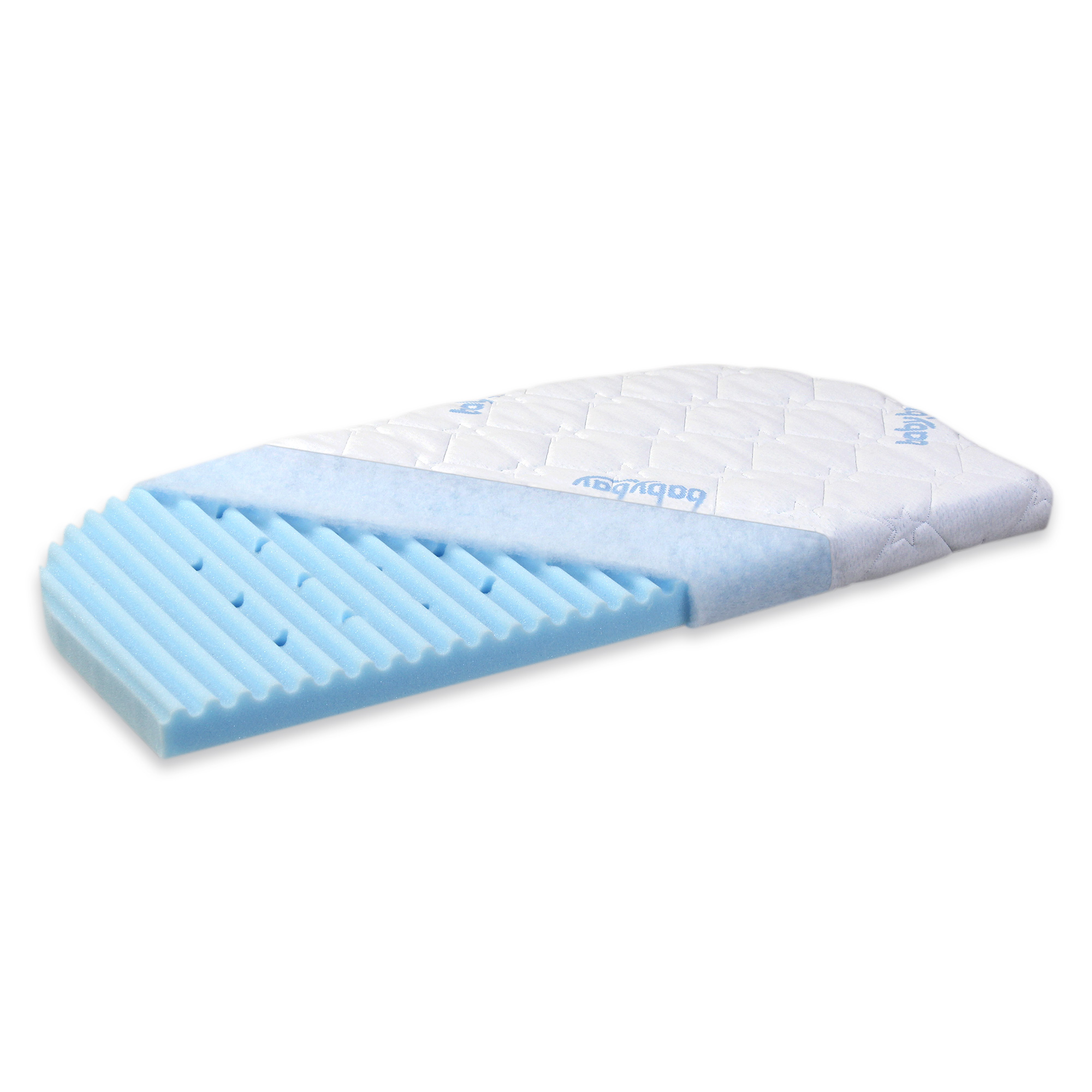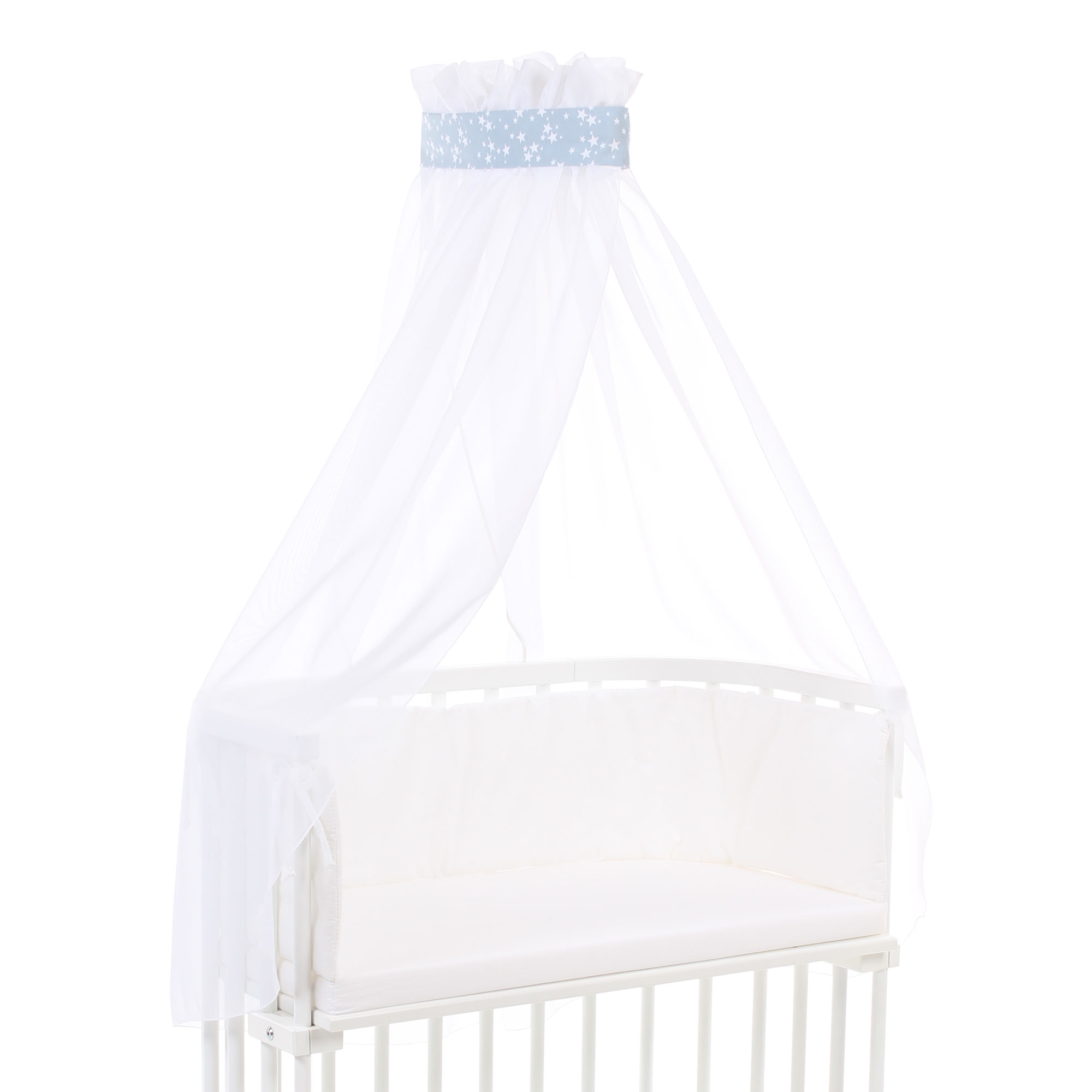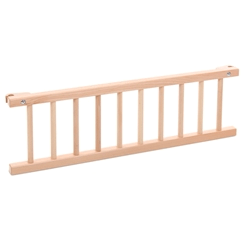If you search for “co sleeping” in the dictionary, you’ll probably find a definition that looks like this one (courtesy of Merriam-Webster): co sleeping is “the practice of sleeping in the same bed or close by in the same room with one’s child.”
Seems simple enough to understand, doesn’t it?
But in truth, this definition doesn’t even begin to answer the question What does co sleeping mean? 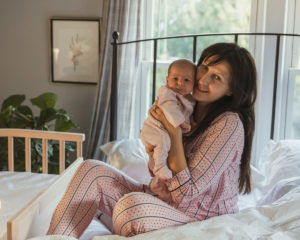
Because this definition groups three very different sleeping practices—bed sharing, room sharing, and co sleeping—under the same “co sleeping” umbrella.
To get a more accurate answer to the question What does co sleeping mean?, it’s important to understand the differences between these three sleeping practices. (Because yep — they’re all different and all come with differing degrees of safety attached.)
Once you understand the pros and cons associated with each, it will become easier to decide whether enjoying the benefits of co sleeping is the right next step for your family.
Co Sleeping, Bed Sharing, and Room Sharing: How Are They Different?
“Co sleeping” is often used as the catch-all term for describing the experience of sleeping close to your baby.
However, co sleeping with the help of a safe bedside co sleeper is a very different experience than practicing more general room sharing or bed sharing. When people use the term “co sleeping,” they’re likely referring to one of two fairly different sleep practices: room sharing or bed sharing.
Because it can be easy for all this different terminology to get kind of (or very!) confusing, here’s a quick breakdown of the similarities and differences:
“Room sharing” refers to instances when baby is invited to sleep in the same room as their parents—but on a different sleeping surface. When parents choose to sleep in their own bed with their baby catching Z’s in a crib or baby bassinet nearby, they are participating in room sharing. 
“Bed sharing” refers to the practice of not only inviting your baby or child into your room, but into your bed as well. When bed sharing, children and parents sleep together on the same mattress and share bedding.
So How Are They Different?
While a bed sharing setup helps parents take advantage of many co sleeping benefits (like feeling more bonded with baby by sleeping so close by), it can be difficult to guarantee safe co sleeping positions when you’re sharing a bed.
That’s because the oh-so-soft mattresses and bedding that parents often prefer are not the safest choice for babies, especially when the baby is still so young that they are not easily able to untangle themselves if they’re accidentally covered by bedding.
Parents who are unsure about whether bed sharing is the right practice for them often turn to bedside co sleepers (also called a bedside crib, along with a few other names) as a perfect solution.
Bedside co sleepers offer a blend of safety and closeness while giving both you and your baby a perfect made-just-for-you place to enjoy the night and sleep tight.
So What’s the Deal with Bedside Co Sleepers and Bedside Cribs?
When you practice co-sleeping with the right bedside crib, you’re able to enjoy all the benefits of bed-sharing, without the safety concerns that sharing a bed with your baby can bring.
This type of safe co-sleeping is sometimes referred to as separate-surface co-sleeping, and involves sleeping on your own mattress with your baby safely cuddled in a bedside baby co sleeper, baby bassinet, or crib pushed against your bedside. 
By using safe co sleeping solutions like the babybay bedside co sleeper, you get to enjoy the plush and comfy bedding and mattress you prefer, while your baby enjoys a made-just-for-them crib mattress and sleeping space all their own.
Which means you’ll be able to co sleep soundly, knowing that your baby is feeling supported by a firm mattress that is perfect for their growing body, while being comforted by the feeling of having you no more than an arm’s reach away.
Co Sleeping Benefits: What Positive Experiences Should You Expect?
The connection between baby and mother doesn’t end the moment that baby is delivered. In fact, experts agree that babies and their caregivers remain physiologically connected to each other in complicated but powerful ways following birth.
As anthropologist James J. McKenna found, babies who sleep close to their caregivers wake up more frequently, but those wakings are also less disruptive than when they are catching Z’s further away.
Parents who are sleeping beside their baby are very aware of and receptive towards these moments of wakefulness, which and will often take a moment to offer touch, check for crisis, hug, or otherwise support their baby in quick but loving ways.
These loving touches go a long way in helping baby settle their stress levels and breathe easy, which positively supports their psychological and physical growth.
But beyond these moments of nurturing, co sleeping makes nighttime nursing easier, and helps the whole family get longer, more restful nights of sleep by making it simple to know when baby needs support and offer the proper care. (Which is good news, because if there’s one thing that all parents could use more of—it’s sleep!)
Separate-Surface Co-Sleeping: What’s the Best Sleeper to Use?
There are many different co-sleepers out there that can be used for separate-surface co-sleeping, but not all of them are gold-star status when it comes to ease, safety, and comfort. 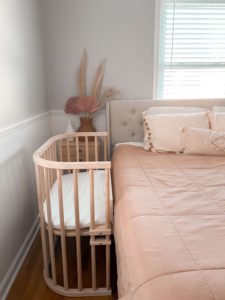
The babybay bedside co sleeper is specially engineered to fit snugly against your own bed, meaning you don’t even have to leave your mattress or reach over awkward crib bars to care for your baby during the night.
And because babybay considers your baby’s safety and comfort as Priority #1, you can be confident that baby will feel secure and supported when cuddled into the half-moon shape designed to mimic the warm embrace of a hug.
Meaning that your baby will feel more than happy to settle into dreamland with you by their side, while you catch some much-needed Z’s of your own—knowing that you’ve found the answers to What does co-sleeping mean? and have a sleeping solution that delivers big co sleeping benefits while delivering peace of mind.

